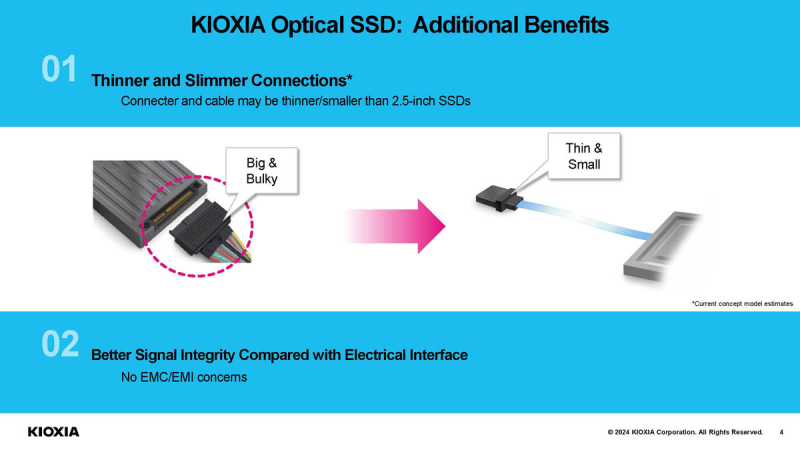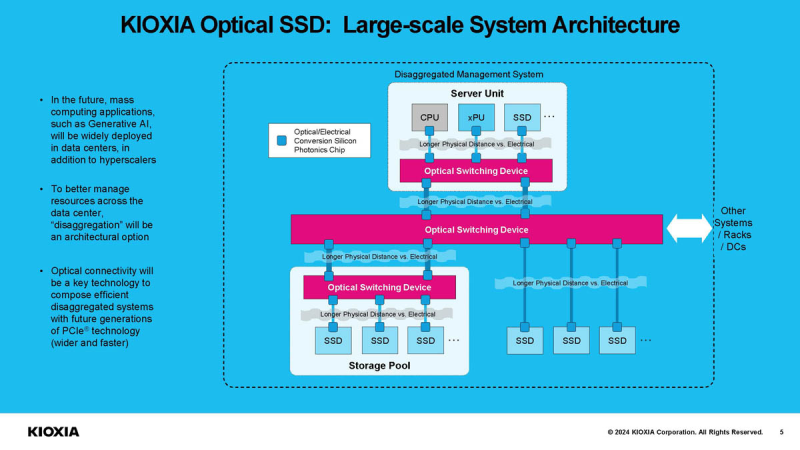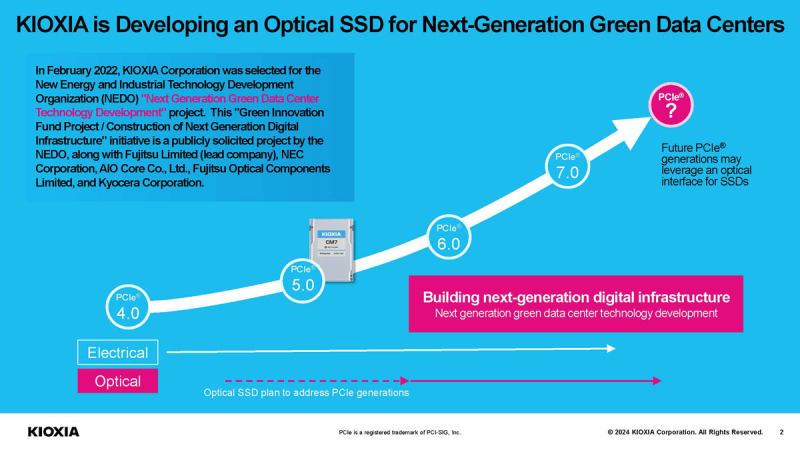Optical interconnect systems have a great future—most major microchip manufacturers are confident of this. Photonics will inevitably penetrate into such a conservative area as interfaces for connecting disk drives. And the first practical steps have been taken in this direction: at the FMS 2024 conference, Kioxia showed a demonstration SSD platform equipped with an optical interface.

Source here and below: Kioxia via ServeTheHome
The current incarnation of physical interfaces has a number of fatal drawbacks: they are limited to four PCI Express lanes, certain dimensional limitations, and extremely short cable lengths, which are also associated with problems maintaining signal integrity, which is especially important for high-speed PCIe versions, as well as the influence extraneous electromagnetic interference.

The Kioxia solution, developed as part of the NEDO green initiative, which aims to reduce the energy consumption of next-generation data center components by 40%, does not have all these shortcomings. The optical communication channel is not subject to any electromagnetic interference, and the connection distance (in the case of the Kioxia solution) can be up to 40 m, and this figure is planned to be increased to 100 m in the future. Theoretically

In addition, this approach simplifies the disaggregation of storage systems, since such a connection can be switched. And at the same time, you can move flash drives outside the hot zone next to the CPU and GPU. Kioxia also talks about more compact connectors, comparing its new product with U.2, but it is worth remembering that the latter provides power to the SSD, while a purely optical interface cannot do this.

The device shown at the conference was not a full-fledged “optical SSD”: an adapter board on which the transceiver was located was connected to a regular drive with a U.2 interface. However, given the progress that silicon photonics is currently making, the optical interface can be easily integrated onto the board of the drive itself. True, mass production of such SSDs, according to Kioxia’s plans, is designed to use at least PCI Express 8.0, so we will clearly not see them tomorrow. However, such a solution could already be suitable for Ethernet SSDs.